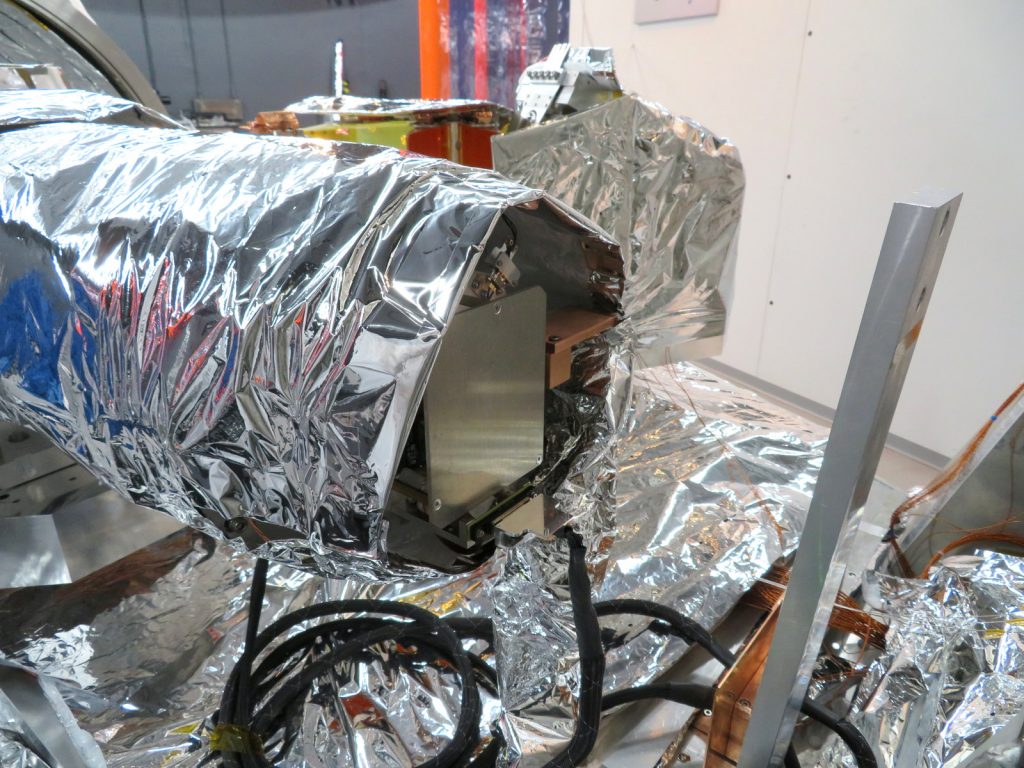2018 March: SPIRou gets a new H4RG science detector
The SPIRou spectrograph is now equipped with a new H4RG science detector
After one year and five cryogenic cycles of tests and validation of the whole SPIRou instrument, at IRAP / OMP (Toulouse) then CFHT (Hawaii) using a first-generation H2RG engineering-grade detector, SPIRou is now equipped with a science-grade H4RG detector of the latest generation – a HgCdTe 4kx4k chip manufactured by Teledyne Imaging Sensors (TIS) in August 2017, featuring 15 µm square pixels and a 2.4 µm cutoff wavelength. With this new detector, the SPIRou spectrograph reached its final configuration, being now capable of recording in a single exposure the complete spectrum of a star in the infrared wavelength range from 0.98 µm to 2.35 µm (whereas only 70% of this domain was covered with the previous smaller detector).

The H4RG science detector was first delivered by TIS at UdeM (Montréal) in late October 2017, then installed by the local SPIRou team on a dedicated Focal Plane Array (FPA, designed and constructed at UdeM, with contributions from IRAP / OMP and CFHT). Following a complete characterization (in terms of read-out noise, gain, dark current, cosmetics, thermal stability) on UdeM’s nIR detector test bench, the detector was shown to be fully compatible with SPIRou requirements. The H4RG detector was also subject to a detailed metrology to ensure that its position will exactly coincide with the spectrograph focal plane (with a precision better than 30 µm, including thermal contraction of the FPA). It was also oriented and positioned so that the few cosmetics defects it features fall in spectral regions of little astrophysical interest.
Following delivery at CFHT in late March 2018, the new H4RG detector and dedicated FPA were unpacked and installed at the focus of the spectrograph camera in place of the old H2RG detector, then wrapped with multi-layer insulation to optimize thermal stability of the optical bench. To prevent risks of electrostatic discharges (ESD) that could damage the H4RG and H2RG chips during the detector exchange, a ESD-free area was setup within the Coudé Room where SPIRou is installed at CFHT. Functional tests were carried out on February 23rd to check that everything was nominal before closing the dewar and starting a new cryogenic cycle. Following a few lab tests with the complete instrument in the coming weeks, SPIRou as a whole should see first light at CFHT on April 24th, for an on-sky technical commissioning run of a few nights.
Installation and tests of the H4RG detector and FPA on SPIRou at CFHT were performed by Philippe Vallée (UdeM), with help from Sébastien Baratchart (IRAP/OMP), Greg Barrick (CFHT) and the whole CFHT team.




